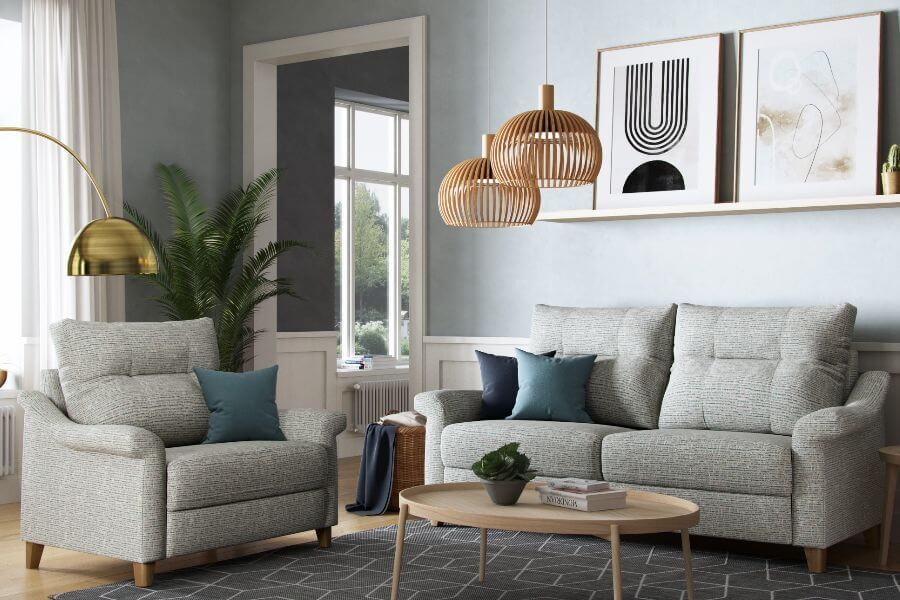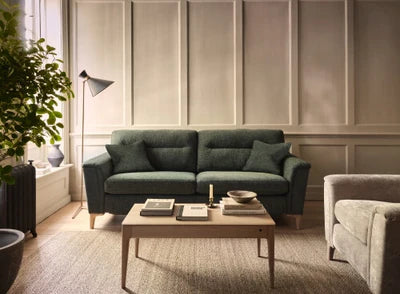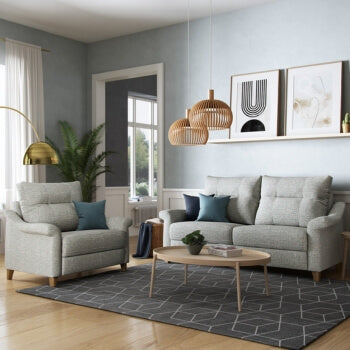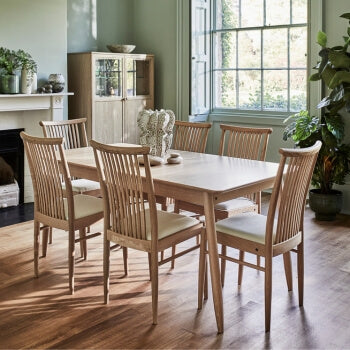The Fascinating History Of G Plan Furniture

Finding the perfect piece of furniture that combines history, style and quality can be a real challenge. Many people want something special for their homes, not just any old chair or table.
One solution? G Plan furniture. This iconic British brand stands out for its remarkable design and superior craftsmanship.
G Plan began after World War II when good quality furniture was hard to find and quickly became known for stylish and durable pieces.
This blog post explores how G Plan offers both historical depth and incredible designs to solve your furniture needs. Ready to discover more? Keep reading!
Key Takeaways
- Ebenezer Gomme launched G Plan furniture in 1953, introducing a fusion of British craftsmanship and Scandinavian design to the world of home decor. His vision set a new standard for attractive, durable furniture.
- Collaboration with Danish designer IB Kofod Larsen in the 1960s brought an elegant simplicity to G Plan pieces, using high-quality woods like teak and rosewood. This partnership elevated the brand's range, making it highly desirable among collectors today.
- Iconic designs like the Ledbury settee and Harper's corner lounging unit showcase G Plan’s commitment to combining style with comfort. Their attention to detail in materials and construction has cemented their legacy as a premium furniture brand.
- Advancements such as Aquaclean Fabrics on upholstery demonstrate how G Plan continues to innovate, ensuring their furniture not only looks good but is practical for everyday use. Promotions like upgrading from Manual to Power Recliner provide added appeal for modern customers.
- Owning a piece of G Plan furniture means possessing a part of design history that appreciates over time. It represents Ebenezer Gomme’s initial vision fulfilled through decades of quality craftsmanship and aesthetic innovation.
The Birth and Growth of G Plan Furniture
Ebenezer Gomme started the G Plan furniture line in 1953, sparking a revolution in home decoration. His early work mixed British craftsmanship with sleek Scandinavian looks, making each piece stand out.
Ebenezer Gomme's Early Innovations
Ebenezer Gomme set out to fill a gap in the market by creating attractive, well-made household furniture. He saw a need for quality pieces that stood out from the rest. His efforts led to early innovations that shaped the future of home decor.
Gomme's work laid down the foundation for what would later become known as G Plan furniture.
These initial steps were vital in carving a niche for G Plan among British households. They paved the way for further creativity and innovation, setting high standards in furniture design and production.
Next up, we explore how Scandinavian design influenced G Plan's development and aesthetics.
The Influence of Scandinavian Design
Building upon Ebenezer Gomme's initial innovations, Scandinavian design began to play a significant role in shaping the style of G Plan furniture. In the 1960s, the sleek and minimalist qualities of Danish design posed a challenge to G Plan.
The company responded by collaborating with IB Kofod Larsen , a renowned Danish designer. Larsen brought a new level of elegance to G Plan pieces, making use of high-quality woods like rosewood and teak.
Larsen's contributions marked a turning point for G Plan furniture, introducing designs that were both simple and beautiful. These creations stood out for their clean lines and lack of clutter, mirroring the distinctive elements of Scandinavian style.
This partnership not only helped G Plan stand against competition but also significantly enhanced its range with armchairs and sofas that are cherished by collectors today.
Iconic G Plan Designs and Features
G Plan has carved out a niche in the furniture world with its standout designs and features. Each piece, from G Plan sofas to G plan chairs, showcases a blend of elegance and functionality that's hard to find elsewhere. The brand pays close attention to detail, ensuring every stitch contributes to both style and durability.
Among their celebrated pieces are the Ledbury settee and Harper's corner lounging unit, known for marrying iconic comfort with sleek design. These items not only define spaces but also invite relaxation and conversation, reflecting G Plan's commitment to creating environments that bring people together.
With teak wood accents and careful upholstery work, these pieces stand as testament to G Plan's legacy of excellence in furniture crafting.
The Value of G Plan Furniture Today
Moving from the iconic designs and features of G Plan furniture, it's clear why these pieces hold their value so well today. With a history steeped in innovation and quality craftsmanship, G Plan continues to offer exceptional comfort with its range of furnishings.
The brand’s dedication to using premium materials means that both vintage G Plan furniture and new models alike stand the test of time. For instance, customers now benefit from advancements such as Aquaclean Fabrics on their upholstery, making daily spills easy to clean without stress.
Whether it’s sleek sofa configurations like the Ellis Corner Sofa or elegant additions such as Ledbury from the Classic Collection, G Plan ensures enduring style and comfort for every home.
The appreciation for E Gomme's legacy through each design assures that owning a piece of G Plan is not just about having furniture but possessing a slice of design history that continues to add value over time.
Conclusion
The journey through G Plan's history shows us how Ebenezer Gomme's vision and innovation led to unique designs that stood the test of time. These pieces not only survived but thrived, adapting to changes in style and preference.
The collaboration with a Danish designer brought a fresh perspective, blending British craftsmanship with Scandinavian elegance. This partnership resulted in furniture that was not just practical but also eye-catching.
For those passionate about bringing a touch of history into their living spaces, discovering original G Plan items can be an exciting adventure. Websites like Vinterior offer curated collections for enthusiasts to browse.
Finally, embracing this slice of furniture history enriches our appreciation for timeless design and craftsmanship. Let's continue celebrating and preserving these beautiful works for future generations to enjoy.
FAQs
1. What is G Plan furniture?
G Plan furniture refers to a popular brand of British furniture that has been celebrated for its stylish design and quality since it was introduced by E. Gomme in the 1950s.
2. Why did G Plan become so famous?
G Plan gained fame for its innovative designs, such as the iconic G Plan chair and the use of high-quality materials in upholstery, making it a household name in vintage furniture circles.
3. Can you tell me about the history behind G Plan's name?
The name "G Plan" comes from E. Gomme’s vision to create a range of furniture that offered flexibility, style, and value – essentially a 'plan' for living which customers could easily adapt to their homes.
4. How did World War II affect G Plan Furniture?
During World War II, restrictions like CC41 (the utility scheme) limited furniture production but post-war, brands like G Plan thrived by offering fresh designs away from wartime austerity which included lines like the luxurious "Stardust" range.
5. Has modern technology influenced how we interact with G Plan today?
Yes! With advancements in internet technology and online shopping platforms, fans of vintage styles can now explore extensive collections of historical pieces like those from Parker Knoll or inspired by designers such as Arne Jacobsen through websites and even sign up on mailing lists for updates on new finds or pricing information.




